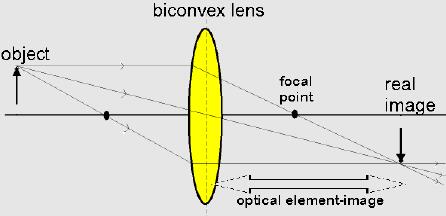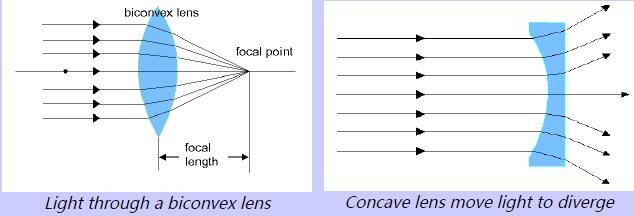Properties of biconvex lenses
May. 19, 2022
Biconvex lenses are considered symmetrical lenses which are simple in nature and consist of two convex lenses in a spherical form. They both tend to have the same radius of curvature. Images that are formed by lenses are due to the refraction of light. Refraction is a term used to describe when a light ray is made to fall on the surface that separates two media, there occurs a change in direction of the ray. It is common knowledge that the speed of light is extremely high in the vacuum and for other mediums, it travels at a lesser speed. Because of this reason, the light ray’s direction can see a change.
The speed and wavelength of the incident light also see a change whereas the frequency remains constant. When the ray enters a lighter medium, it can shift away from the normal, while if it enters into a medium that has a high density, then it bends nearer to the normal. A convex lens can be seen as a converging lens that converges the rays which come from any object at a particular point. So, this is how a real image is formed.
The optical center is the center of the spherical convex lens. An optical center can be formed during the intersection of two spheres. This lens arrangement is termed a biconvex lens.

Properties of biconvex lenses
● Biconvex lens has a positive focal length.
● Their focal length is short.
● They have a high ability to converge the incident light.
● Biconvex lenses can form both real and virtual images.
● These lenses can minimize spherical aberration. They have a distortion value whose conjugate ratio corresponds to unity.
These lenses have a symmetrical structure which means it contains equal radii on both the sides. Biconvex lenses are generally used for virtual imaging purposes in the case of original objects. Apart from that, the biconvex lenses also have a positive conjugate ratio which ranges from 0.2 to 5.

The following are some of the important properties that a bar magnet can possess
● Every bar magnet consists of two poles, north, and south, at each of their ends. Even if the magnet gets broken from the middle, it will still possess the same properties. They will still have north and south poles no matter how many times it gets broken or cut.
● The magnetic force of this magnet is stronger on its poles than its middle point.
● When the magnet is suspended freely in the air tied to the thread, it would come to its original position only if the poles are arranged in a north-south position. A perfect example of this would be a mariner’s compass.
● If two bar magnets are kept together in a close manner, their like poles repel each other while their unlike poles attract one another.
● They can attract all types of ferromagnetic materials namely cobalt, steel, iron, and cobalt.
Biconvex lens formula
Given below is the formula of a biconvex lens,

Where, = radius of curvature of lens 1 = radius of curvature of lens 2
Uses of biconvex lens
Biconvex lenses are used in everyday life. These can be used to magnify something small in size. Some of the applications where these lenses can be used are mentioned below
● Biconvex lenses are used as burning glasses.
● They are found in the anatomy of our eyes, where we produce virtual images.
● They can be seen in biconvex lens industries as well as in image relays.
● Biconvex lenses are considered as positive lenses where they seem to be the best lens that can be used for converging beams and are regarded as diverging in nature.
● There are many imaging systems like binoculars, projectors, telescopes, and microscopes. To obtain images, all these systems make use of biconvex lenses.
● The microscope is a very popular device that uses a biconvex lens to image things that are invisible to naked eyes. For instance, to describe the cellular structure of human organs, bacteria, germs, microorganisms, and other viruses.
● The telescope makes great use of a biconvex lens to observe objects that are at a very long distance, with the help of their emissions, radiations, electromagnetic ways, and absorption.
Making a biconvex lens – DIY
● 1. Cut cardboard into a circle of diameter 5 cm.
● 2. Now, place this on the water bottle followed by drawing its shape and cutting the 2 circles from the plastic bottle with the aid of scissors.
● 3. Now, join these circles with the help of glue.
● 4. Join their edges while leaving space in between them.
● 5. Then take a bowl that consists of water and make the joined circle dip inside it.
● 6. We can now see that some amount of water fills in the center space of the circles.
● 7. Now stick the left space with the help of glue.
● 8. Try to read some handwritten notes with the help of the created lens. You will be able to see word-to-word writings in each of the sentences that appear to be magnified.
Previous: Best Choice of Spherical Lens
Next: What Are Lenses for?





















